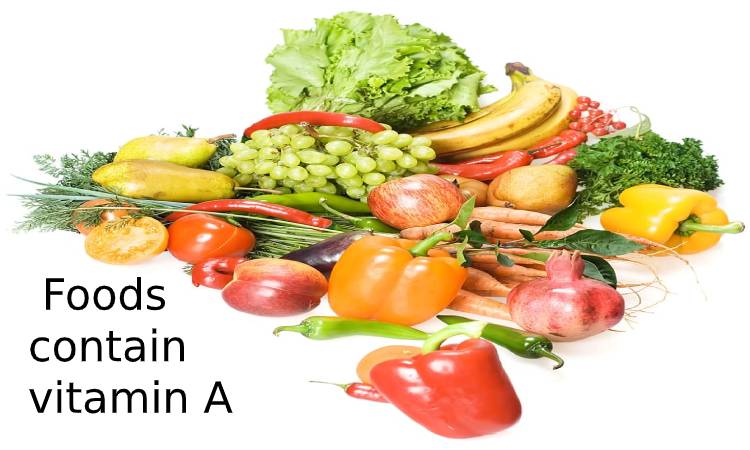Regular consumption of vitamins is essential for our body to perform many functions. Each vitamin group is related to certain benefits. In essence, this time, we will talk about vitamin A and where to find it.
Table of Contents.
It is a fat-soluble compound that the body acquires when ingesting both foods of animal origin (retinol) and those of plant origin (carotene). Helps maintain good vision by generating visual purple for the retina, maintains the cellular level by encouraging hair and nail growth, and contributes to skin regeneration and dental enamel care.
Besides, it directly benefits the reproductive organs, stimulating the creation of sperm, ensuring the healthy growth of the egg, and stabilizing hormones during the monthly cycle.
Finally, this vitamin is a powerful antioxidant that protects against free radicals that cause cellular oxidation. Thus, it helps fight cell aging and intervenes in the formation and maintenance of tissues, helping to avoid infections. The heart, lungs, and kidneys appreciate this vitamin contribution.
All experts say to maintain good general health and good eyesight, have a balanced diet that contains all the vitamins and nutrients necessary for the proper functioning of the body. And among these vitamins, there is one that stands out for being especially good for the eyes we are referring to vitamin A
Also Read: Power Salad Health Benefits And Its Essential Nutrients
What is vitamin A and why is it so beneficial?
The characteristics are great antioxidant properties. Therefore, they can protect the body’s cells from free radicals, which are the causes of aging, symptoms, and diseases associated over time.
The benefits of this vitamin in terms of sight, are:
- Stop the loss of visual acuity typical of aging.
- Protect the retina from its deterioration and possible diseases.
- Reduce the risk of developing age-related eye diseases, such as muscular degeneration or cataracts.
- Prevent diseases derived from problems in eye strain, such as glaucoma.
- Noticeably improves night vision.
What foods does It contain?

Many foods contain vitamin A, including all dark green leafy vegetables and orange, green, or yellow fruits.
Here is a list of foods with the highest amount:
- Dairy: milk, butter, and cheddar cheese.
- Vegetables: carrot, broccoli, sweet potato, cabbage, and spinach.
- Fruits that contain vitamin A are melon, apricot, and mango.
- Food of animal origin: beef, chicken, turkey, and fish.
What is the best diet for eyesight?

In addition to enough of This vitamin, to finish strengthening our eyesight, our daily diet should be characterized by the:
- The regular presence of foods that contain Omega 3, a fatty acid that is very effective in strengthening the retina, and that protects us from dry eyes and various degenerative eye diseases. If we frequently eat fish such as tuna, salmon, sardines, or mackerel, we make sure that we are ingesting the necessary doses of Omega 3.
- Foods rich in lute-in to strengthen the in and the lens that is partly composed of this substance. For this, we must include spinach, cabbage, collard greens, and broccoli in our diet.
- Minerals like selenium and zinc, present in many vegetables, cereals, legumes, and nuts, are good contents of Vitamin A.
- We should take an optimal diet with healthy lifestyle habits to stay healthy,
- exercise regularly, try to control stress, and have a nutritional diet.
- Do not smoke or drink alcohol excessively
- Get frequent medical check-ups,
Lack or excess of Vitamin A

To determine the level of vitamin A carries out blood tests. The lack of It can make a person more prone to infections, and vision problems such as night blindness, or rashes, according to the National Library of Medicine in the United States.
Its excess, on the other hand, can cause diseases such as eating disorders, excessive weight loss, alopecia, or very severe headaches. It can also cause jaundice, but it is something reversible that disappears within a few days after leaving sufficient intake.
Also, some people with certain conditions may need an additional supplement of this vitamin:
- Premature babies, who often show low levels during the first year of life.
- People with cystic fibrosis, since It, promotes recovery from the treatment of intestinal problems caused by the disease.
- Cornelia, since they have problems absorbing fats, may not assimilate the minimum amount necessary.
Recommended amounts of Vitamin A
 Lack of vitamin A, according to the National Library of Medicine of the United States, can lead people to be more prone to contracting infections, and vision problems such as night blindness or skin rashes.
Lack of vitamin A, according to the National Library of Medicine of the United States, can lead people to be more prone to contracting infections, and vision problems such as night blindness or skin rashes.
However, its excess can cause diseases such as eating disorders, hair loss, or migraines.
To have a reference on the daily intake of It for the population,
the European Scientific Committee for Human Food established recommended amounts of vitamin A that are:
- Infants from six to 12 months: 350 micrograms.
- From one to six years: 400 mg.
- Children from seven to ten years: 500 micrograms.
- Age eleven to 14 years old: 600 micrograms.
- Men who higher than age 15 and over 700 micrograms of It are compulsory.
- Women aged 15 and over 600 micrograms.
- For pregnant women 700 micrograms of the vitamin is necessary.
- Lactating women 700 micrograms of consumption in pregnant women is good for health.
Some people with certain conditions may need an additional supplement of this vitamin, such as premature babies or people with cystic fibrosis because It favors recovery from problems. Intestinal causing disease.


